Hanyangdoseong Seoul City Wall Stamp Tour (서울 한양도성 순성길)
9.7Km 2025-06-30
Nusang-dong, Jongno-gu, Seoul
Hanyangdoseong Seoul City Wall is a 18.7 km-long trail that encircles the old capital city of Hanyang, covering Bugaksan, Inwangsan, Naksan, and Namsan Mountains. The urban trekking course provides the opportunity to see Seoul's history, culture, and nature all at once, including four large gates, four small gates, and 169 cultural heritages. To enjoy the trail even further, take part in the stamp tour. Travelers who complete the full trail, collecting stamps and taking pictures at the designated locations will recieve a completion certificate.
Namdo Bunsik Seochon Branch (남도분식 서촌점)
9.7Km 2024-02-20
1F, 2 Ogin 2-gil, Jongno-gu, Seoul
Namdo Bunsik is a snack restaurant that caters to the tastes of the younger generation by adapting regional traditional cuisine. The flagship menu features namdo tteokbokki, an jeukseok tteokbokki (instant tteokbokki) crafted with various ingredients such as pollack, scallions, and radish, with the broth prepared in-house. The spiciness of the tteokbokki can be adjusted from level 1 to level 3. Another popular item is sangchu twigim (deep-fried lettuce), where deep-fried dishes and pickled onions are wrapped in lettuce for consumption.
17℃ (17도씨)
9.7Km 2019-01-26
38, Donggyo-ro 29-gil, Mapo-gu, Seoul
17℃ stands for the optimum temperature to preserve chocolates at its best quality. Presenting a wide variety of hand-made chocolates, purchasable items include chocolate bars and café menus like chocolate cakes and chocolate beverages. In particular, you can control the amount of cacao in your chocolate drink ranging from 40%~80% according to your preference.
OKIN PIZZA (옥인피자)
9.8Km 2021-03-19
26, Ogin-gil, Jongno-gu, Seoul
+82-2-737-9944
This is a Western cuisine located in Jongno, Seoul. The best menu at this restaurant is pizza. You can eat delicious pizza at hanok, a Korean traditional house.
Yeonnam-dong (연남동)
9.8Km 2024-03-19
Yeonnam-dong, Mapo-gu, Seoul
Yeonnam-dong, located near Hongik University Station, has become a hot spot in Seoul as young artists and hipsters gather. It is densely packed with art spaces, and every alley is filled with unique concept cafés and many restaurants. There are also many guesthouses, editorial shops, and fashion stores, along with Yeontral Park, which was transformed from the old Gyeongui Line railroad into a park.
Dongjin Market (동진시장)
9.8Km 2022-01-18
198, Seongmisan-ro, Mapo-gu, Seoul
+82-2-325-9559
Dongjin Market is the only traditional market located in Yeonnam-dong, and operates much as a normal market on weekdays. However, Dongjin Market operates a special Night Market on Thursdays and Fridays, as well as special Saturday and Sunday markets. The market changes into the form of a flea market on the weekends with people selling handmade accessories and produce grown within the city. The market also offers a cooking workshop and other dynamic programs.
Sangchonjae House (상촌재)
9.8Km 2024-10-21
12-11 , Jahamun-ro 17-gil, Jongno-gu, Seoul
Sangchonjae House, run by the Jongno Cultural Foundation, is a traditional hanok cultural space located in Sejong Village, Ogin-dong, Jongno-gu, and operates various cultural Korean programs such as exhibitions, educational experiences, and events to fully experience Korea's four seasons. The name Sangchonjae was conceived from the old name of Sejong Village, the western part of Gyeongbokgung Palace and the birthplace of King Sejong. The house reflects the lifestyle of an ordinary peasant during the Joseon dynasty. It consists of three buildings: the main building, the guesthouse known as sarangchae, and the annex. There is an experience center indoors offering tea ceremonies and traditional game experiences.
Z.I.Gallery (지아 衣 갤러리)
9.8Km 2020-04-11
76, Jahamun-ro, Jongno-gu, Seoul
+82-2-762-1241
Z.I.Gallery is a boutique shop by the renowend designer, Zia Kim. Her works have appeared in Seoul Collection, Paris Pretaporter, department stores, and shops abroad. Visitors can purchase items with unique designs and cutomized items. It directly runs two brach stores in Gahoe-dong and Hyoja-dong. These handmade items go through meticulous quality management.
NUHADANG(누하당)
9.9Km 2024-06-20
49-7 , Pirundae-ro, Jongno-gu, Seoul
+82-2-3391-0010, +82-10-4347-5768
Nuhadang is a traditional hanok with over 100 years of history. It is located in a quiet spot in Seochon, Jongno-gu, Seoul, where many scholars and artists have lived since Joseon times. Rooms are wallpapered with eco-friendly Korean paper, and thick cotton blankets and cypress pillows will sooth travelers' fatigue. In the yard and small garden you can experience traditional Korean culture: janggu drumming, the game of yunnori, and Hanbok clothing. Walking the streets of Seochon - past Yun Dong-ju's hostel, Park No-su's art museum, and Lee Sang's house - you can still feel the atmosphere of old Seoul.
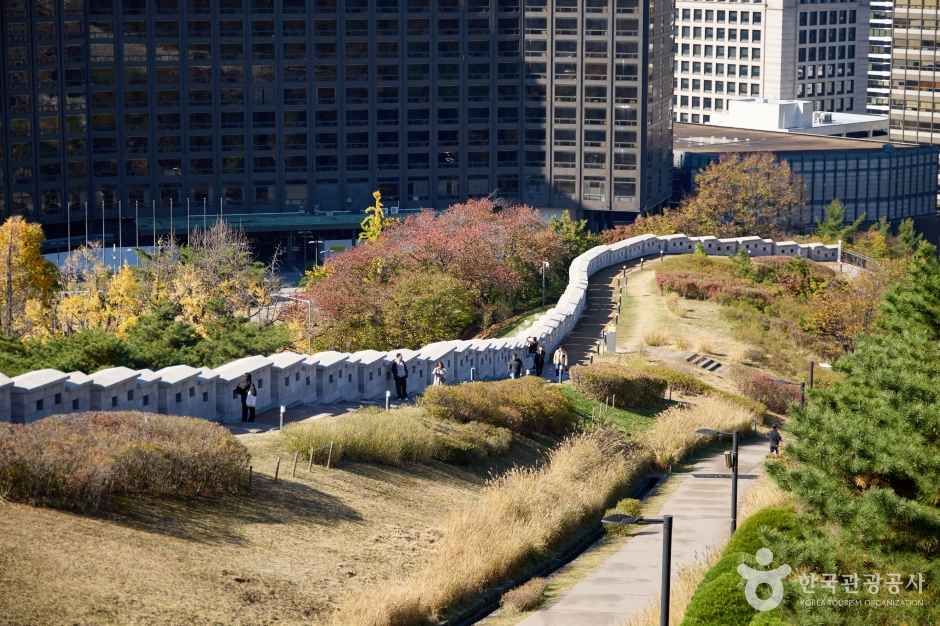
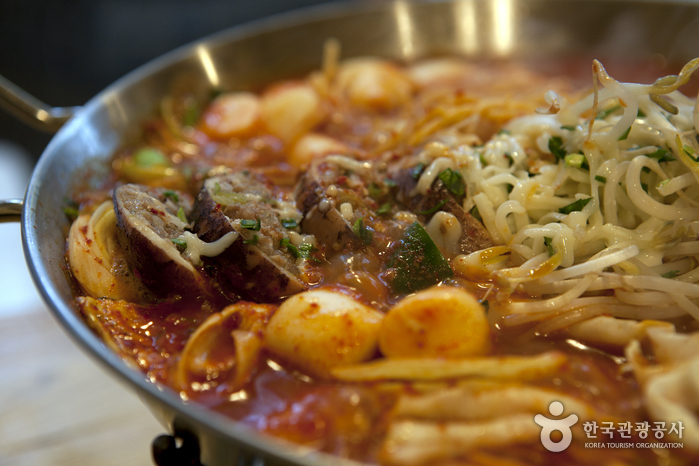
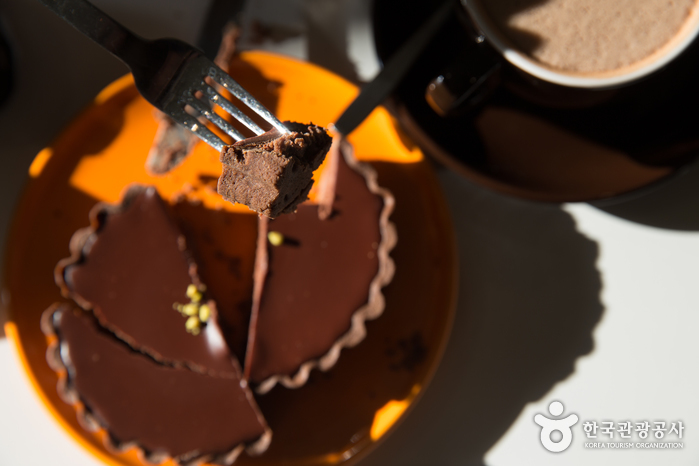

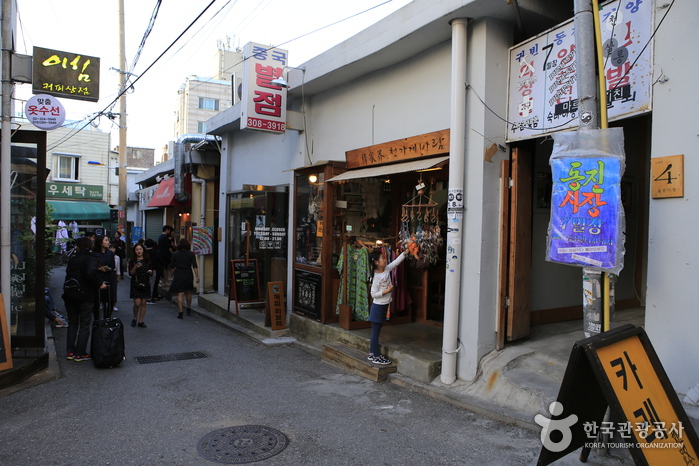
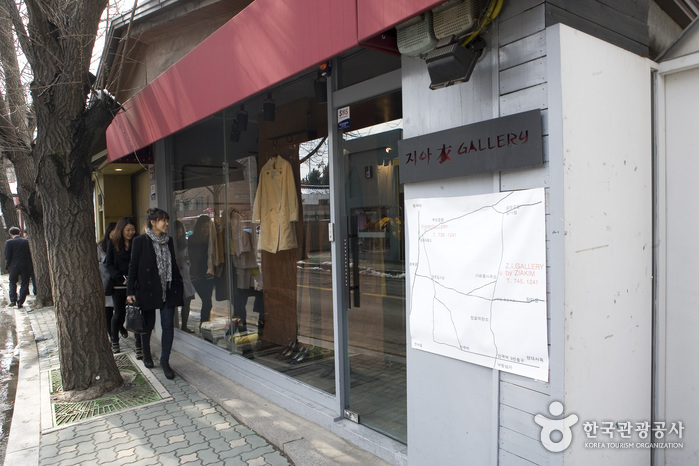
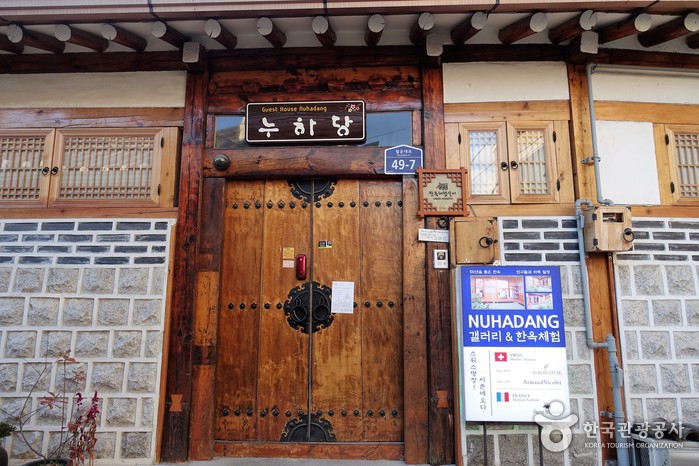
 English
English
 한국어
한국어 日本語
日本語 中文(简体)
中文(简体) Deutsch
Deutsch Français
Français Español
Español Русский
Русский